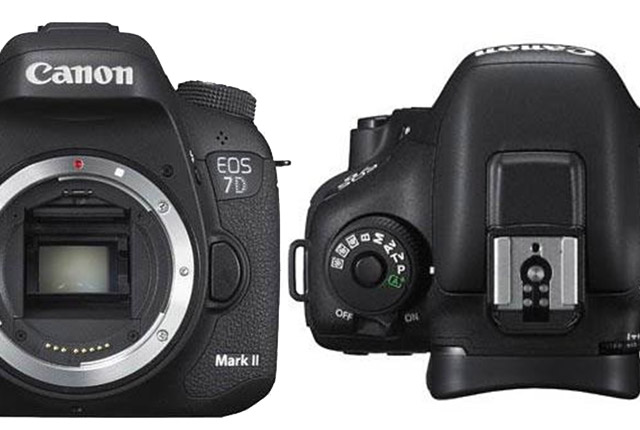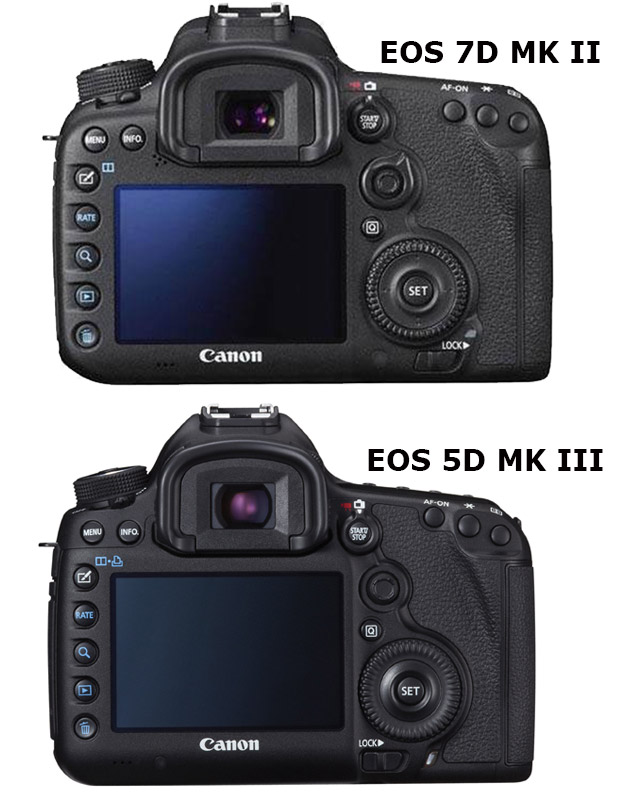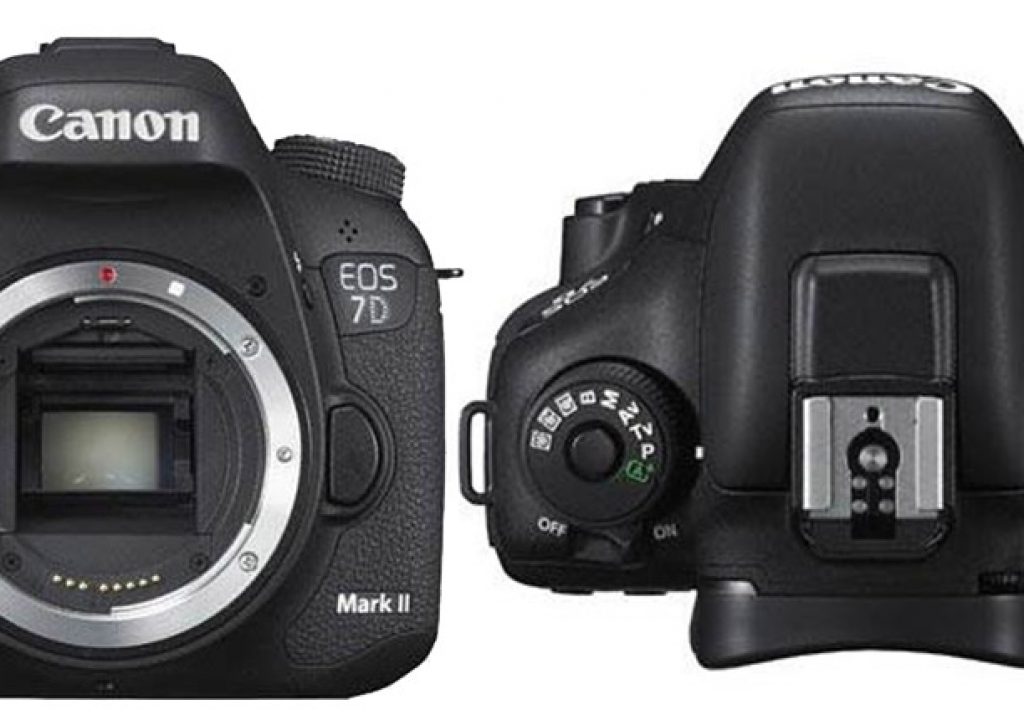
Although many are moaning about the EOS 7D Mark II missing important things – to them – the fact is that the new camera is a baby 1DX or 5D Mark III. Canon, again, goes for stability instead of folklore. And extends video options, along with photographic capacities that justify the 5 year wait for a new camera.
The EOS 7D is dead. The new EOS 7D Mark II is born. No, it does not have 36MP, but really, who cares? After all, when you look at camera specs in the professional area, the pros are happy with cameras that have 22MP or less – check the specs for the EOS-1D X (18MP) and the EOS 5D MK III (22.3MP) or the Nikon D4, at 16MP – so why should those that mostly publish tiny little pictures on their Facebook pages want more?
Really, I will never understand those people that are changing brands – or saying so… – each time a new camera comes out. Either they have a lot of money to spend – and hey, the marketing guys do love you – or then there is something I do not get. I’ve been a Canon loyal user for ages – I could have been Nikon, but I had to choose and accept the pros and cons – and I do not intend to change. In fact, I’ve no reasons to change, when I think about the subject.

If people cared to read a little more, they would find out that once you start to raise ISO sensitivity, the DR advantage for Sonikon sensors goes overboard, and ends being worst than Canon’s. So Canon is in fact more interested in resolving high ISO noise than in offering a wider DR range, which, anyway, is not needed/used most of the time. Do you really need 14 stops of DR instead of 11.5, at base ISO? That’s the common difference. You mean you didn’t know?
This takes me back to the EOS 7D Mark II, which, in fact, is going to be my next camera. Both for video and also for photography. Although I use a lot the lowest sensitivity – 100 ISO – I also need the higher ISO for some situations, and I’ve found that I tend to shoot, recently, a lot of my flower photography at 400 ISO. Being able to move one step up or two might be an interesting option, I believe, so I am very curious to try the new camera. This Winter, doing flower photography in forest areas might be a good testing ground (if I can put my hands on a EOS 7D Mark II). As I tend to not use tripod for my flower photography, the extra speed in terms of ISO might just be one of the best reasons to upgrade from my EOS 50D.
I am also very interested in using the EOS 7D Mark II for video, as it offers some options that are not available on the EOS 600D I am using at the moment. The Dual Digic 6 processors, the 65 AF points all cross-type (dual cross on the center point) with Servo AF for video shooting sound interesting, along with ISO 100-16000, (ISO Boost mode 25600 and 51200) and 1080p/720p that both get 60fps, with an expanded choice of file formats (MOV or MP4) and compression algorithms (IBP, ALL-I, Light IPB). It should be mentionned, though, that not all of this work together. In fact, Dual Pixel CMOS AF is not available when shooting at 60p, so users will have to decide which they prefer to use at different moments. On the other hand, i a first for EOS, both Movie Servo AF speed and tracking sensitivity can be customised, giving you complete control for pull-focus effects and transitions between subjects.
I ‘ve some ideas for nature video that I can put in practice this Winter, and the EOS 7D Mark II may be the right choice, also because it seems to be weather resistant at the same level as the big brother EOS-1D X.
In fact, the EOS 7D Mark II looks a bit like a baby EOS-1D X. This alone suggests the group of photographers Canon is aiming at: working professionals that need a reliable APS-C body with similar specs of the top camera in the brand. The original EOS 7D was built with that intention and this one just keeps the trend for cameras that do not have all the features to satisfy everybody, but have an essential set of features, and are geared towards those that need speed on a small body. We’ve seen, recently, professional photographers asking for cameras that do not to try to be “everything to everybody” but that offer logical options for some segments. The EOS 7D Mark II fits into that category, it seems. It may not be the camera a landscape photographer chooses, but for a nature photographer it surely is a viable and most adequate choice, mixing high speed (10 fps) with good results when ISO sensitivity has to be taken higher. There, the Signal/Noise performance of Canon sensors will shine. For me, it is a good compromise.
I’ve to thank Canon for keeping the joystick on the EOS 7D Mark II, a missing feature on all he cameras after the EOD 50D (in the EOS XXD family) , and one of the reasons why I’ve kept my EOS 50D as my main camera. That joystick is much needed, as its presence in all most expensive cameras from Canon suggests. In terms of layout the EOS 7D MK II follows normal Canon design, but the buttons on the back are positioned on similar positions as the EOS 5D MK III – and to a certain extent to the EOS-1D X, an approach that will make its use even more easy for those already using the EOS 5D Mark III and looking for a second camera. The depth of field preview button, for example, is now on the right, as on those models.
AF seems to be another area where Canon is investing time, and also bringing down to more accessible bodies the options available on models like the EOS-1DX. Only that explains the 65 AF points all cross type, with the centre sensor being a dual cross sensor. It’s going to be interesting to see what this does, as well as it will be interesting to see what Canon means by Servo AF for video shooting.
So, there seems to be a whole lot going on for this camera… if you’re not expecting it to be a revolution. I firmly believe Canon is more interested in building cameras that work and follow what seems to be their logic: better AF and high ISO results. The EOS 7D Mark II is a sign of that logic. With its Digic 6 processor it will offer better results than previous models, and will place the bar higher. It will also suggest what can be expected from the next models using Digic 6 as the powerhouse, and what users of FF models will get. Me, I am going to be happy with this excellent compromise, as I’ve been with the EOS 50D. No time to moan about it not having 4K video, serving coffee and making pizzas. I just want to take pictures and do some FullHD video. I bet the EOS 7D Mark II will do that perfectly!
For reference, please read my most recent articles about DSLR cameras with video:


